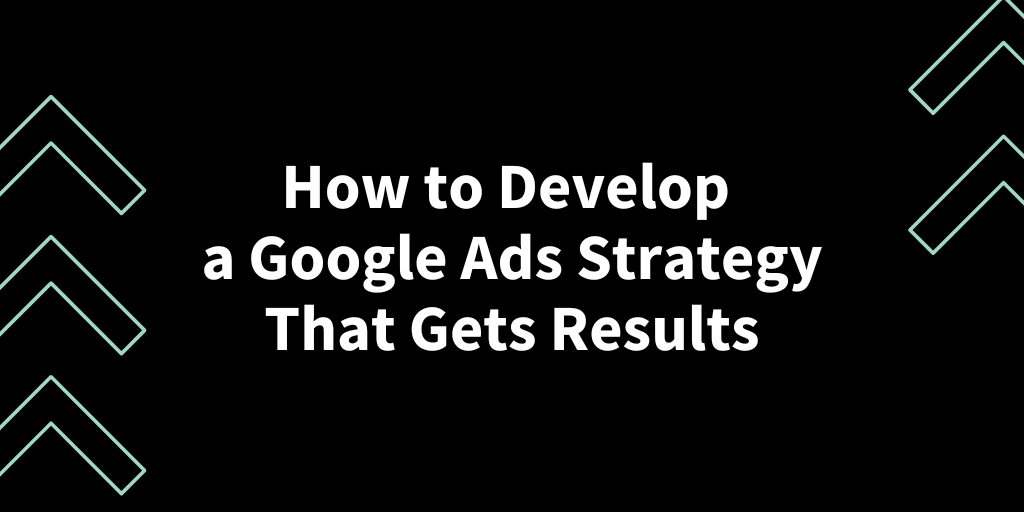How to Develop a Google Ads Strategy That Gets Results

Have you ever looked at a Google Ads campaign and immediately gotten the urge to slam your laptop shut? You’re not alone!
Pay-per-click (PPC) advertising is among the most powerful types of online advertising, but understanding how to build a Google Ads strategy is key to getting the best results from your campaigns.
However, this is easier said than done. To create the most effective campaigns possible, you’ll need to understand:
- How the Google Ads platform works
- What types of campaigns are available
- The various tools and strategies you can use to optimize your campaigns
- … and more!
In this blog post, we’ll provide an overview of the Google Ads platform, discuss the different types of campaigns available, and provide tips and strategies for developing a successful Google Ads strategy.
What is Google Ads?
Google Ads (formerly known as Google AdWords) is an online advertising platform developed and managed by Google which allows businesses to create and manage pay-per-click (PPC) campaigns to reach their target customers.
These campaigns can serve a variety of purposes including promoting products and services, generating leads, and driving website traffic.
Types of Google Ads Campaigns
Google Ads allows businesses to create various types of PPC campaigns, each with its unique purpose and goals.
Let’s explore some of the most popular types of campaigns:
Search Campaigns
Search campaigns target users based on the keywords they type into Google’s search engine. Ads are triggered when a user’s search query matches the keywords set in the campaign.
Best for: Search campaigns are best suited for businesses looking to attract new customers or generate leads.
Display Campaigns
Display campaigns use a variety of visual media, like images, video, and text, to promote products and services. Ads are triggered when a user visits a website or interacts with an app.
Best for: Display campaigns are best suited for businesses looking to increase brand awareness and reach a wider audience.
Video Campaigns
Video campaigns use video ads to promote products and services. Ads are triggered when a user watches a video or interacts with an app.
Best for: Video campaigns are best suited for businesses looking to engage with a large audience and increase brand awareness.
Shopping Campaigns
Shopping campaigns use product images and descriptions to promote products and services. Ads are triggered when a user visits a website or interacts with an app.
Best for: Shopping campaigns are best suited for businesses looking to increase sales and reach targeted customers.
App Campaigns
App campaigns (surprise, surprise) promote apps and mobile games. These ads are triggered when users interact with an app or visit a website.
Best for: Not surprisingly, app campaigns are best suited for businesses looking to increase app downloads and engagement.
Tips for Developing a Successful Google Ads Strategy
Now that you know some of the different types of campaigns that are available, let’s look at a few tips and insights for developing a successful Google Ads strategy:
Set Clear Goals
Before you start creating a Google Ads campaign, it’s important to set clear goals to make sure that your campaigns are focused and effective.
Your goals should be specific and measurable, like increasing website traffic or generating leads.
Choose the Right Campaign Type
Once you’ve set your goals it’s time to choose the best campaign type to help you reach them.
For example, a search campaign is often the best option if your goal is to increase website traffic.
On the other hand, if your goal is to increase brand awareness, a display campaign might be more effective.
Create Relevant Ads
To maximize the effectiveness of your campaigns, it’s important to create ads that are relevant to your target audience.
Your ads should be optimized to target the right users, with the right message, at the right time. This can take some time to figure out, though!
Test Different Ad Variations
It’s important to regularly test different ad variations to find out which ones are the most effective.
You can test different ad copy, images, and call-to-action phrases to see which ones are most successful and “swap” them in to replace ads that are under-performing.
Monitor and Optimize Your Campaigns
Spoiler alert: you should never “set and forget” your ads!
It’s important to monitor and optimize your campaigns on a regular basis to make sure that they’re performing as expected. You should regularly check your campaigns to see what’s working, and what’s not, and adjust your campaigns accordingly.
Start Running Google Ads Today
By understanding the platform, setting clear goals, choosing the right campaign type, creating relevant ads, testing different ad variations, and regularly monitoring and optimizing your campaigns, you can create a Google Ads strategy that gets results.
If this feels like a little too much effort (we feel you), never fear! We’ve got a Google Ads expert with +20 years of experience running PPC campaigns ready to help — drop us a line and let’s chat.

